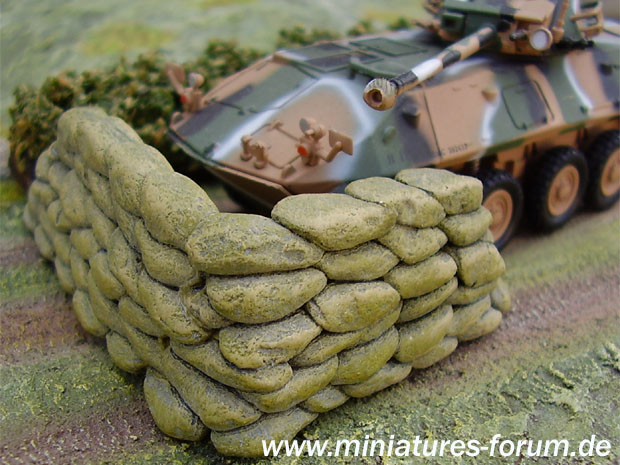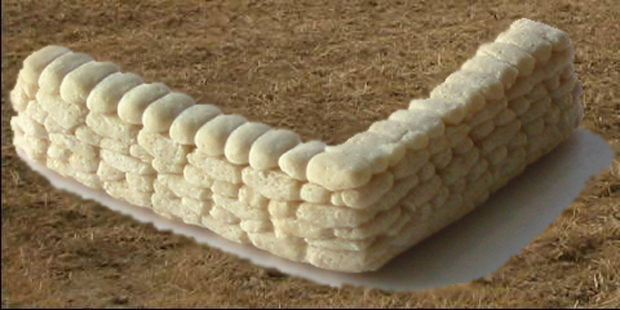Modelling 1:72 Sandbags from Play Dough
1:72 Scale Modelling Techniques

Anti-tank gun emplacement built from individual sandbags made of DAS Pronto cellulose clay available at hobby shops. DAS Pronto dries and hardens very slowly and there is no noticeable shrinkage. The clay is textured enough to accurately represent a 1:72 scale sandbag, although it may be textured further by pressing a gauze bandage against the surface of the still wet clay sandbags. Store DAS Pronto in an airtight container to keep it fresh. Cellulose modelling clay is cheap and effective, sold ready to use, it contains no toxic chemicals, and cures at room temperature.

Sandbag wall with right angled corner made from craft or play dough. The 1:72 scale sandbags were laid according to section 13.4. Sandbag revetment, of the US Army 1944 Military Training Pamphlet № 30 Field Engineering (All Arms). The emplacement was baked in the oven, and it may now be painted olive green to camouflage it. One to three layers of play dough sandbags are enough to revet foxholes, mortar pits, and trenches.
Clifford Button sent us his recipe for craft dough which may be used to bake up some sandbags at home. Dough sandbags come out golden brown and they are easily painted, using waterbased paints. Craft dough does not rise or shrink much. It is easy and safe to work with, has a pleasing texture after baking, and is available at very little cost. The original recipe is often used for christmas ornaments representing baked goods. The dough may be rolled flat and cut into sections to represent adobe walls.
- 2 cups of flour
- 1 cup of cold water
- 1 cup of salt
Mix flour and salt together. Gradually add the water to make a smooth yet medium stiff dough. Add food colouring, to pre-colour the dough. Add two tablespoons of white glue to further toughen the clay. Form into desired shapes and bake at 170° Centigrade (325° Fahrenheit) for several hours until dry and hard. Paint and drybrush as desired.